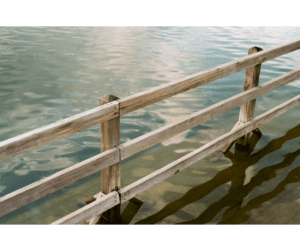The dream of homeownership takes various forms, and for many Americans, manufactured homes offer an affordable and flexible housing option. However, with the benefits of mobility and cost savings come unique challenges, especially when it comes to protecting these homes from natural disasters like floods. In this article, we delve into the importance of flood insurance for manufactured homes, exploring the risks, coverage options, and the steps homeowners can take to safeguard their investments.
Understanding the Risks of Flood Insurance for Manufactured Homes
Manufactured homes, sometimes referred to as mobile or modular homes, are vulnerable to the same natural disasters as traditional houses. However, their lightweight construction and often elevated positioning can make them particularly susceptible to flooding. Floods can result from various factors, including heavy rain, storm surges, or overflowing rivers, and can cause significant damage to the structure, foundation, and belongings within the home.
Manufactured homes are commonly located in areas prone to flooding, such as coastal regions or floodplains, which heightens the importance of having adequate flood insurance. Unlike standard homeowners’ insurance policies, flood insurance is a separate policy that covers damages specifically caused by flooding, offering a layer of protection against the unique risks faced by manufactured home owners.
 The National Flood Insurance Program (NFIP)
The National Flood Insurance Program (NFIP)
For many homeowners of manufactured homes, the National Flood Insurance Program (NFIP) is a crucial resource. Administered by the Federal Emergency Management Agency (FEMA), the NFIP provides flood insurance for manufactured homes, in participating communities. This program is essential for those residing in areas where obtaining flood insurance through private insurers might be challenging or expensive.
Key Features of NFIP Flood Insurance
- Structure Coverage: NFIP flood insurance typically covers the structure of the manufactured home and its foundation. This includes the walls, floors, insulation, electrical and plumbing systems, appliances, and built-in furniture.
- Content Coverage: Personal belongings within the manufactured home, such as furniture, clothing, and electronics, are also covered under the NFIP policy.
- Exclusions: It’s important to note that NFIP policies have certain exclusions, such as coverage for detached garages or other structures not directly attached to the manufactured home.
Private Flood Insurance Options
While NFIP is a valuable option, homeowners of manufactured homes can also explore private flood insurance alternatives for obtaining a flood insurance quote. Private insurers may offer additional coverage options, more flexibility in policy terms, and competitive pricing. Before opting for private coverage, homeowners should carefully compare the terms, conditions, and coverage limits to ensure that their specific needs are met.
Mitigation Measures
In addition to obtaining flood insurance, homeowners can take proactive measures to mitigate the risk of flood damage to their manufactured homes:
- Elevate the Home: Elevating the manufactured home can reduce the risk of flood damage. This may involve placing the home on a permanent foundation or adding stilts to lift it above potential flood levels.
- Anchor the Home: Proper anchoring ensures that the manufactured home remains in place during flooding, reducing the risk of structural damage.
- Create a Barrier: Installing barriers, such as berms or levees, can help divert floodwaters away from the home, offering an additional layer of protection.
- Maintain Drainage Systems: Clearing debris from gutters, downspouts, and other drainage systems is essential to prevent water accumulation around the manufactured home.
As the threat of flooding continues to affect communities across the United States, it’s crucial for owners of manufactured homes to prioritize flood insurance as a fundamental component of their risk management strategy. Whether obtaining a flood insurance quote through the NFIP or private insurers, securing adequate coverage can provide financial protection and peace of mind in the face of unforeseen natural disasters. Additionally, implementing mitigation measures adds an extra layer of defense, helping to safeguard these homes and the dreams of homeownership they represent. By being proactive and informed, homeowners can navigate the waters of flood risk and ensure the longevity and resilience of their manufactured homes.



